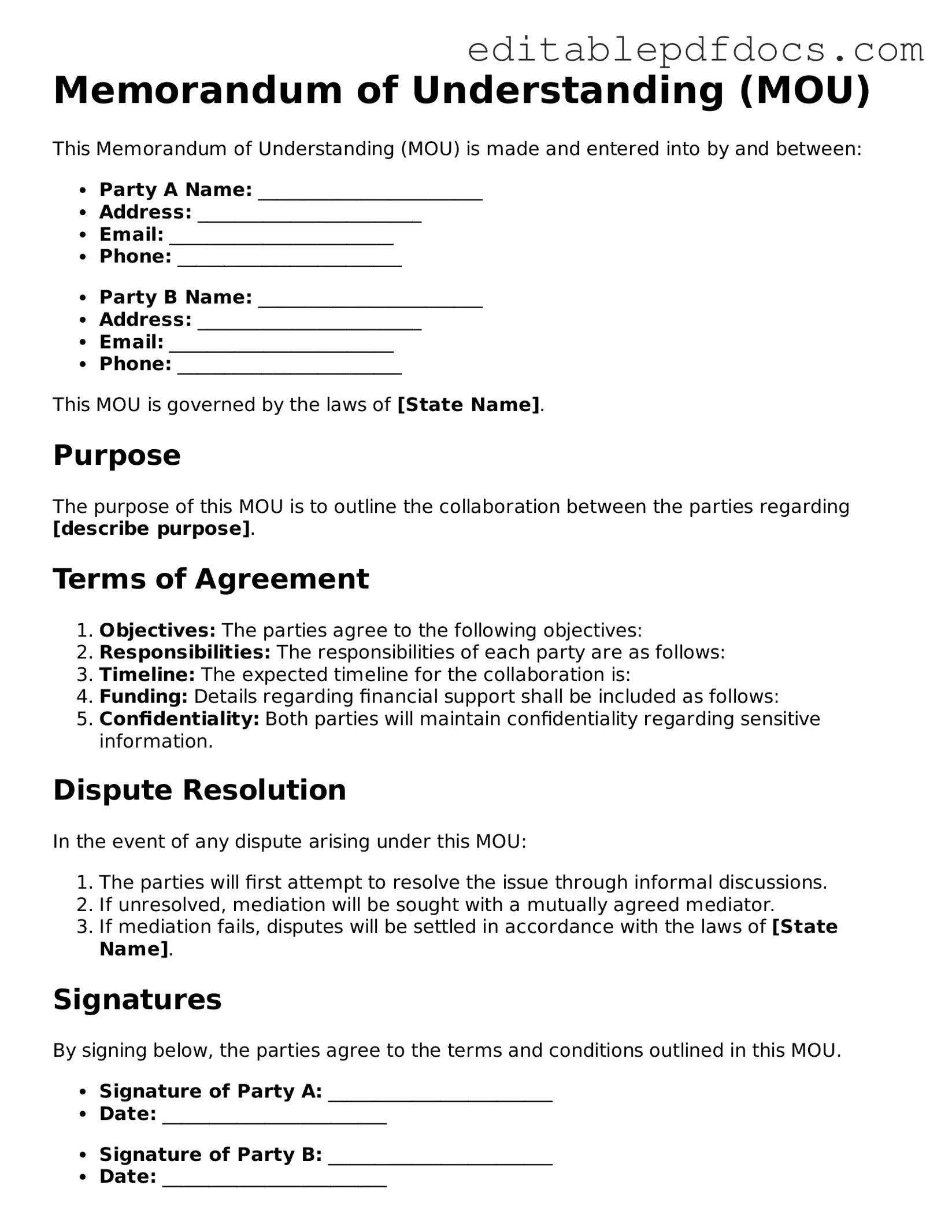Filling out a Memorandum of Understanding (MOU) can seem straightforward, but there are common pitfalls that many people encounter. One frequent mistake is failing to clearly define the purpose of the MOU. Without a well-articulated purpose, the document may lack direction and clarity, leading to confusion among the parties involved.
Another mistake is neglecting to specify the roles and responsibilities of each party. Each participant should know their obligations and contributions to avoid misunderstandings later on. When roles are vague, it can create frustration and conflict, undermining the agreement's effectiveness.
Additionally, many people overlook the importance of including timelines and deadlines. Without these, it becomes challenging to track progress and accountability. A clear timeline helps ensure that everyone is on the same page and working towards common goals within a specified timeframe.
Some individuals also forget to address the methods for resolving disputes. Including a section on conflict resolution can save time and resources if disagreements arise. By outlining how to handle potential issues, parties can maintain a cooperative relationship even during tough times.
Another common error is not reviewing the document thoroughly before signing. Skimming through the MOU can lead to missed details that may have significant implications. Taking the time to read through the entire agreement ensures that all parties understand the terms and conditions fully.
People sometimes make the mistake of using overly complex language. While it might seem professional, jargon can alienate those who are not familiar with specific terms. Keeping the language simple and straightforward makes the document accessible to everyone involved.
In some cases, individuals fail to include all necessary signatures. An unsigned MOU is not enforceable. Each party must sign the document to validate the agreement and demonstrate their commitment to the terms outlined.
Moreover, not keeping a copy of the signed MOU is a mistake that can lead to confusion later. Each party should retain a copy for their records to refer back to when needed. This practice fosters transparency and accountability.
Lastly, people may forget to revisit and revise the MOU as circumstances change. An MOU is not a static document; it should evolve with the relationship and project. Regularly reviewing and updating the agreement can help maintain relevance and effectiveness over time.
